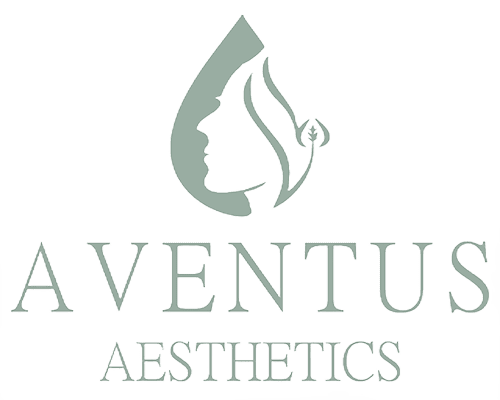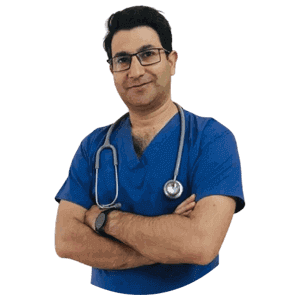Plastic surgeons have carried out non-surgical facelifts for many years. More men and women are taking notice as non-surgical therapies grow safer and more efficient. Many believe a facelift would be costly, involve extensive cosmetic surgery, and only benefit those over fifty. However, patients of all ages may benefit from revolutionary anti-ageing and skin-tightening results without downtime owing to non-surgical facelift procedures.
Wrinkles and fine lines are a regular part of ageing, but you don’t have to accept them. It is not even necessary to have surgery to seem young. You can use a safe and non-surgical facelift treatment to enhance your beauty.
What is a Non-Surgical Facelift?
A non-surgical facelift is a quick and easy approach to getting glowing, younger-looking skin. Gravity causes the face and neck to sag and wrinkle as we age. Non-surgical facelifts temporarily lessen the appearance of wrinkles and drooping skin. Patients are increasingly choosing non-surgical facelift treatments since many of them are accessible.
These non-surgical procedures include Kybella, Botox, Intense Pulsed Light (IPL), Ultrasound, Laser Lifts, Dermal Fillers, Fat Transfer, and Dermal Fillers. A popular non-surgical procedure is known as a “liquid facelift.” Botox and strategically placed dermal fillers work together to provide the appearance of a facelift without the need for anesthetic or surgery.
Non-surgical face treatments provide a range of alternatives that are cheaper and less intrusive. Specific treatments provide superior outcomes for certain problems, such as how loose your skin is, how deep your wrinkles are, or whether you wish to get rid of age spots. Your particular demands will determine which non-surgical facelift is most successful.
The following are a few benefits of non-surgical facelifts:
- In the short run, they are more cost-effective: A non-surgical facelift might provide excellent value for the money if cost is a concern.
- There is no severe discomfort present: The patient experiences very little discomfort during a non-surgical facelift. For individuals who are anxious about such treatments, this is encouraging news.
- The operation takes little time: Since no anaesthetic or other medication is required for a non-surgical facelift, these treatments are finished within an hour. The operation duration may vary for each patient, however, since each is unique.
- They provide an appearance of natural renewal: In a non-surgical facelift, the skin is often plumped and volumized rather than cut or pulled tight, giving the skin and facial features a more youthful appearance.
- The recovery period is brief: Non-surgical facelifts require the patient to miss the last time from work or other obligations. Compared to a standard surgical facelift, the recovery period is much shorter. You may return to work quickly following a non-surgical facelift!
- The follow-up is also brief: Not much aftercare is required for a non-surgical facelift. The discomfort is usually only temporary and is treatable with over-the-counter drugs.
- Fewer dangers present: Even if a surgical facelift is performed with the greatest care, there may still be risks, including infection and anaesthesia-related problems. All of these hazards are avoided with a non-surgical facelift, which provides you excellent peace of mind.
Most non-surgical facelift sessions are completed in minutes or an hour. Depending on the therapy used, results may persist for three to four months or even two years. Additionally, redness and other uncomfortable side effects are often transient and modest.
Different Non-surgical Facelift Techniques:

The following are some significant non-invasive facial rejuvenation procedures and non-surgical facelift types:
Dermal Fillers

A notable example of a non-surgical facelift is dermal fillers. They are smooth gel injectables that may, immediately after injection, restore “lost volume” over the cheekbones, temples, lips, and under the eyes.
Dermal fillers restore young vitality by “plumping up” hollows and removing shadowy regions. When applied to the marionette lines or nasolabial folds, sometimes referred to as “smile lines” or “laugh lines,” they may also provide a smooth, wrinkle-free appearance (common wrinkles that appear around the mouth and chin with age).
Hyaluronic acid, among other components, is a substance that holds a lot of moisture. They work as a cushion and lubricant to lessen harm to the skin while hydrating it by retaining water. Fillers’ smoothing and plumping effects might continue for six months to over a year.
Botox

Dynamic wrinkles appear as creases on the forehead and in the space between the eyebrows and are caused by repeated facial expressions. The nerve impulses to the muscles that cause wrinkles are basically “frozen” by Botox, which releases tension and lessens the appearance of deeper lines and wrinkles on the face.
Patients of both sexes are choosing to undergo preventive Botox, commonly known as “Baby Botox” or “Botox sprinkles,” since it is becoming increasingly popular. Preventative Botox is a cosmetic procedure that effectively stops the development of deep facial wrinkles and fine lines, which are early indicators of aging. Botox is often used to give patients a non-surgical brow lift that opens up the region around the eyes and gives them a more youthful look.
Botox may be used to treat neck bands and give a non-surgical neck lift successfully. Botox is a supplementary therapy that, like many of these procedures, may be used with other methods to address several problem areas simultaneously.
Laser Skin Procedures

Your skin’s color and texture are improved with laser skin treatments. They improve the overall look of your face by making it more radiant and smooth. Laser skin treatment may assist in minimizing fine lines and wrinkles.
- Reduce pore size
- Take away brown stains
- Remove surgical or acne scars
- skin tightening
The two kinds of laser skin treatments that experts distinguish between are laser skin resurfacing and laser skin tightening. Radiofrequency is used in laser skin tightening to heat the tissue under the skin. Heat tightens the skin and encourages the production of more collagen.
A laser peel commonly referred to as laser skin resurfacing, eliminates old, dead skin to reveal younger, smoother skin. Sun damage, acne scars, an uneven skin tone, and other age-related problems are all faded by laser skin resurfacing.
Microneedling

Another popular method for promoting tighter, smoother skin is microneedling with radiofrequency. A doctor will use tiny needles during this operation to send heat-based energy to the lowest layers of your skin. It may aid in producing new skin tissue and collagen, which is particularly beneficial for problems with scarring, sagging skin, and uneven skin texture.
The size of the region being treated determines the cost of micro-needling. For the greatest results, you may need many sessions. Although it’s generally considered safe for healthy individuals, the treatment may not be safe if you’re pregnant or on certain drugs for acne.
Minor skin irritation that occurs immediately after the surgery and redness that lasts a few days are common side effects. Less frequent negative effects include persistent scarring and infections.
Chemical Peeling

Chemicals strip your skin’s outermost layers. Chemical peels may erase wrinkles, shrink enlarged pores, and reveal younger, firmer skin. The majority of individuals need many chemical peels to get the desired results.
Depending on the problem you want to address, you may choose between superficial, medium, or deep chemical peels. A topical anesthetic may be used to significantly numb skin regions during deep peels that completely penetrate the middle layer of the skin. Your face will wash before the procedure, and you might be asked to wear goggles to shield your eyes. Your pulse rate will be closely monitored as an IV is started in you.
How long it takes to heal from a chemical peel depends on the kind of peel you get:
- Four to seven days are needed for healing after minor chemical peels. You might have transiently lighter or darker skin.
- Your skin will, at first, swell, then develop crusts and dark spots before fresh skin is shown. Your skin will require roughly five to seven days for medium chemical peels. However, you may have months-long redness.
- The new skin will take around two weeks to grow after thorough chemical peels. Remember that redness often lasts for many months.
Kybella
Kybella is an injection that gets rid of submental fat. Deoxycholic acid, which is one of its active ingredients, is a naturally occurring chemical that breaks down fatty tissue. After injection, Kybella safely metabolizes the damaged tissue while dissolving fat cells.
Patients with elastic skin respond best to Kybella because the skin may quickly snap back into place when fat is eliminated. The fat cannot regenerate when it breaks down. Therefore the results are long-lasting.
Ultherapy
Ultherapy is a non-invasive procedure that stimulates collagen formation by penetrating the skin with radiofrequency ultrasound radiation. The method generates targeted ultrasonic energy that spares the epidermis while lifting and tightening the skin using heat energy. The skin is rejuvenated throughout this procedure, giving the face its previous, young form. Typically, therapy involves only one session with no downtime in between.
Learn More About Our Most Popular Procedures
Dr Zain ul Abidin and his team of knowledgeable and caring professionals provide excellent plastic surgery treatments tailored to each patient’s needs at AZ Plastic Surgery. They are well known for the results of their aesthetic plastic surgery, and to help their patients achieve their cosmetic goals, they combine talent, knowledge, and the greatest medical care.
The most distinguished professional organisations inside and outside of Pakistan have given them membership honours.
Contact us today
For more information or to schedule a free consultation, please contact us. We look forward to serving you.
Conclusion:
A healthy individual with mild to moderate facial drooping is an excellent candidate for a non-surgical facelift. Before scheduling your operation, you should have an initial consultation with the specialists to review your issues, objectives, and expectations and to measure if you are a good candidate for non-surgical facelifts.


